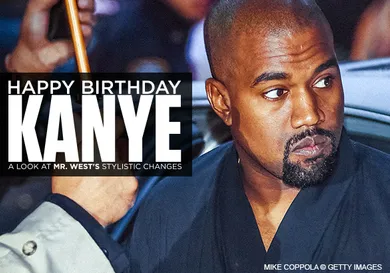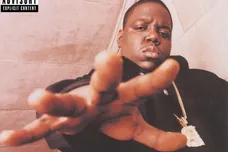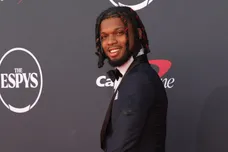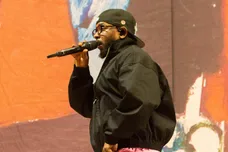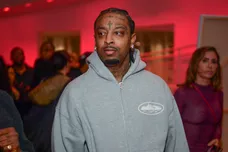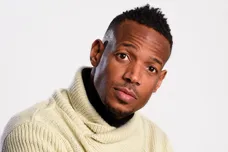Kanye West has gone through a boatload of changes over the course of his career. What started with The College Dropout was almost completely opposite of what we saw in Yeezus, and anyone who has been following the 37-year old’s career to any extent knows that there have been a good handful of switch-ups in that time. Since it’s Mr. West’s birthday today, we decided to discuss his stylistic changes over the years.
Before "The College Dropout"
Kanye West’s career before College Dropout is most notably marked by his work on The Blueprint. Producing four of the album’s tracks, Kanye quickly became one of the hottest producers in the game. With a sound that was influenced by J Dilla, No I.D. and '70s soul, his style was infectious.
Kanye also produced music for Foxy Brown, Goodie Mob, Talib Kweli, Beanie Sigel, Dead Prez, Cam’ron, Nas, Scarface, Ludacris and more before releasing his solo debut. The soul-sampled style of his work stayed cohesive through most of these productions.
"The College Dropout"
Producing an entire album by yourself is incredible, but producing an album with as much impact as The College Dropout is one in a million. The album blew up due to singles like “Jesus Walks,” “Slow Jamz,” “All Falls Down,” and “Through The Wire,” and it set Kanye on his path to superstardom.
Stylistically, Kanye was different than almost any rapper in history. Before he came out rocking pink Polos and Louie Vuitton bags, the tough guys conquered rap. Sure, A Tribe Called Quest and De La Soul held it down for the conscious, but neither of them had an impact like Kanye did. All of the stars we saw that have come since, the Kid Cudis, Drakes, Wiz Khalifas, ASAP Rockys, and J. Coles of the world, ran with this new style in a lot of ways.
"Late Registration"
With Late Registration, Kanye built upon the style he debuted in The College Dropout. He linked up with Jon Brion, a record producer and multi-instrumentalist who had worked with non-rap acts like Elliott Smith and The Crystal Method previously, to help out with instrumentation and string arrangements. The result was a sound new to hip-hop. You probably wouldn’t hear the choir part of “Crack Music” or get an Adam Levine feature without his impact. It was slightly cinematic, and with Kanye getting his swagger on 100, it ended up sounding incredible.
Kanye also didn’t hesitate to reach out to the rest of the rap game for features. Lupe Fiasco, Jamie Foxx, Paul Wall, Common, The Game, Brandy, Jay-Z, Nas, Cam’ron and Consequence all showed up on the 21-track LP. Along with Brion, Kanye sampled Curtis Mayfield, Ray Charles, Bill Withers, Etta James, Otis Redding, Gil Scott-Heron, and more to keep it classic. Most of the tracks contained elements of songs you already loved, and that goes a long way in hip-hop.
"Graduation"
Graduation was the first time Kanye really switched his style up. Look at the album covers for the first two, and then look at Graduation. You’ll notice the neon colors, done by Japanese artist Takashi Murakami. It’s a fitting visual for the album, which was ultra-modern in style. “Flashing Lights” evoked a slow-tempo four-to-the-floor beat and synths that are also commonplace in French house music. “Stronger” took it a step further and directly sampled Daft Punk.
The album was also shorter than the previous two, and started the trend of Kanye’s albums falling around the 13-track mark. He enlisted a bunch of hands for the record, contracting violinists, cellists, and no less than 17 engineers, amongst others. He did away with the skits too, something that was previously a regular occurrence in hip-hop. Graduation has a refined sound and is more focused than the previous two records.
The "Glow in the Dark" Tour, which also featured Rihanna, Lupe Fiasco, and N.E.R.D., was ahead of its time. For a 2008 tour to jump the gun on so many rave elements years before the EDM boom took place is a demonstration of Kanye’s genius.
"808s & Heartbreak"
After dropping three albums that were received with the highest appreciation, Kanye West did the unbelievable. Ye completely switched his style up, releasing a record that fits under the electropop umbrella, but hardly hip-hop.
While fans were skeptical of the auto-tune style and bleepy production at first, it all changed over time. Cuts like “Say You Will” and “Heartless” have since become classics, and Kanye’s singing voice, evoked by the loss of his mother, was another step in embracing open emotions within hip hop culture. Kid Cudi, Drake, James Blake, Frank Ocean, and The Weeknd are just a few artists who built off the groundwork 808s created.
"My Beautiful Dark Twisted Fantasy"
To many, Dark Twisted Fantasy is regarded as Kanye’s magnum opus. Bouncing back from the detour 808s took, Mr. West returned to hip-hop for a 68-minute masterpiece that put him back on top.
By experimenting with a maximalist mentality, West enlisted Kid Cudi, Raekwon, Rick Ross, Jay Z, Nicki Minaj, Bon Iver, Swizz Beatz, RZA, Pusha T, John Legend and more artists to help him out with the tracks. No I.D. helped to produce the tracks, and it turned out to be a huge sound that melted soul, baroque, hip-hop, and electro in a grandiose way. It’s truly one of those albums that sounds like a movie.
Kanye interwove the arts into his Dark Twisted Fantasy. The ballet bit in the accompanying film Runaway and the cover art by George Condo are a couple examples of how Kanye took hip-hop to unknown territories with this landmark album.
"Watch The Throne"
And then he linked up with HOV! In an ultimate move, Kanye and Jay Z collaborated for an album that was called Watch The Throne. Just think about it for a second…
The sound of WTT was driven more by modern rap sounds than Twisted Fantasy was, and it lacked a certain sense of experimentation that had been so prevalent in Kanye’s previous two albums. In some ways it was a step back from Fantasy. However, the sound was refined, and it was luxuriously decadent, not unlike the all-gold-everything you see on the album cover.
The two embarked on an insane tour, where they did things like play “N*ggas in Paris” 8 times in a row and what not. Watch The Throne was Ye and Jay’s way of saying they know they’re on top of the game, and who gon’ stop ‘em, haaahhh?
"Cruel Summer"
Kanye took the luxury trap sound that we heard on cuts like “H.A.M.” and stepped it up on Cruel Summer. As electronic music had fully infiltrated American culture in form of the EDM boom, hip-hop production saw a renaissance as well. Hudson Mohawke has a few production credits on Cruel Summer, and influenced the albums sound greatly, even on cuts like “Clique” and “Cold,” where he’s absent.
Cruel Summer was Kanye’s way of playing maestro. With less focus on his own raps, Ye turned the spotlight to his homies Big Sean, Pusha T, and 2 Chainz, among others. The richness of the production really carried the album, and it was a pretty natural progression after Fantasy and Throne’s releases.
"Yeezus"
Kanye’s last full-length album was sort of the 808s of this era. Stylistically it was a total turn from the orchestral rap he was making on the last couple releases. Instead of string arrangements and monstrous bass, Yeezus was about techno sounds and minimalism.
Influenced by his time in France, Yeezus features Daft Punk, Brodinksi, and Gesaffelstein, amongst others, on production. Yeezus is the antithesis of Kanye’s recent work, trading melodic moments for abrasive ones, and swagger for anger.
The monstrous tour to follow was all of the bells and whistles you could expect from Kanye, who also married Kim Kardashian right around this time. A cameo from Jesus and a massive rock were just a couple of the theatrics seen during Kanye’s face-mask-wearing performances.
Speaking of masks, you can’t mention the Yeezus era without mentioning fashion. The album almost plays out like a modern musical interpretation of fashion week, where all-black-everything and punk rock abrasion is taking over.
"SWISH" and beyond
As his life slowly transitioned from an unknown soulful hip-hop producer to a living reality TV show, Kanye’s music changed a lot too. The most current work we've seen is like a compromise between the Yeezus work and the previous albums: “Only One” could be an 808s b-side, “All Day” could have been on Watch The Throne, and “FourFiveSeconds” wouldn’t have been extraordinarily out of place on Fantasy. As a father, it seems like Kanye has left a little bit of his ego behind and started putting the music first again. For better or for worse, we can’t wait to see what Kanye has in store for us next.
